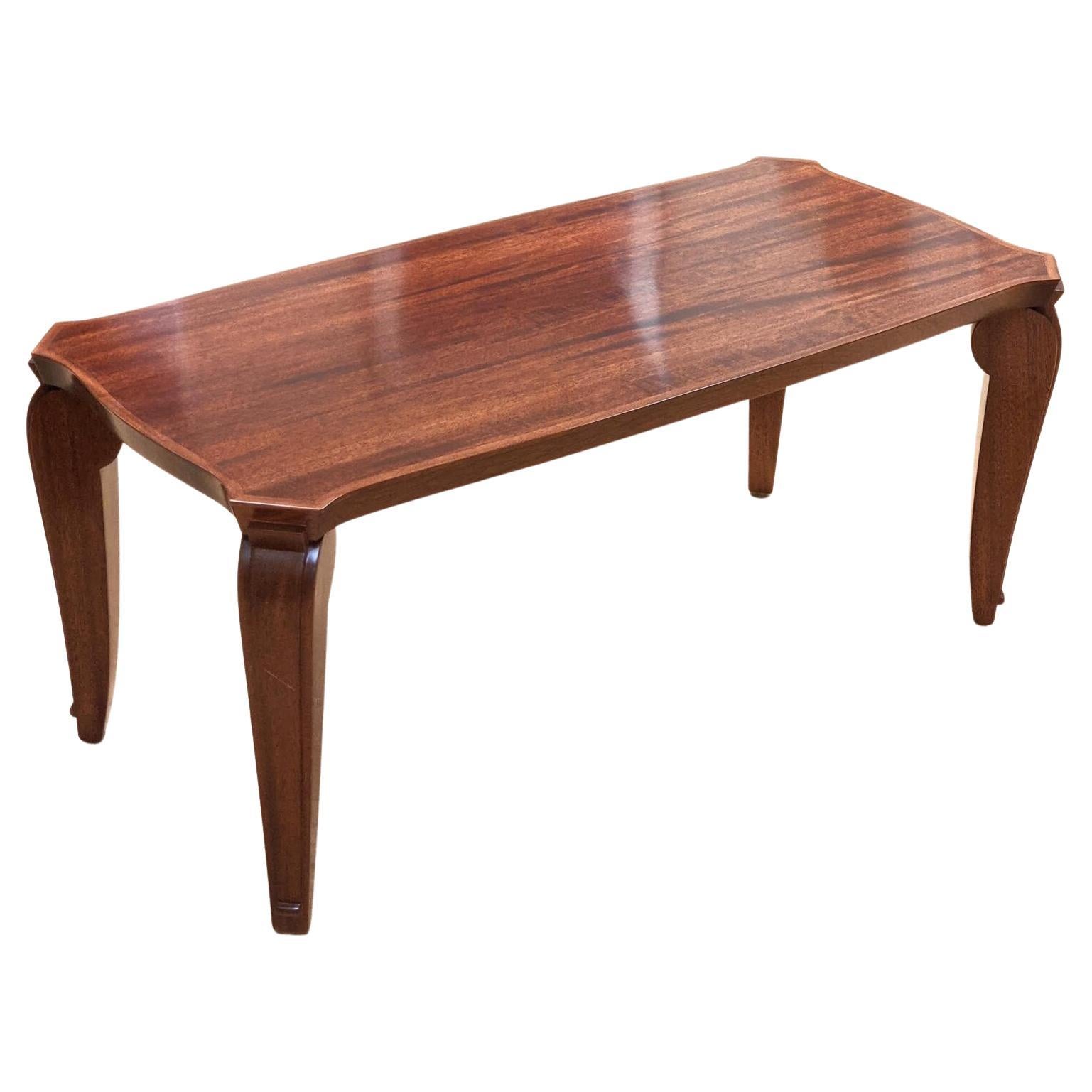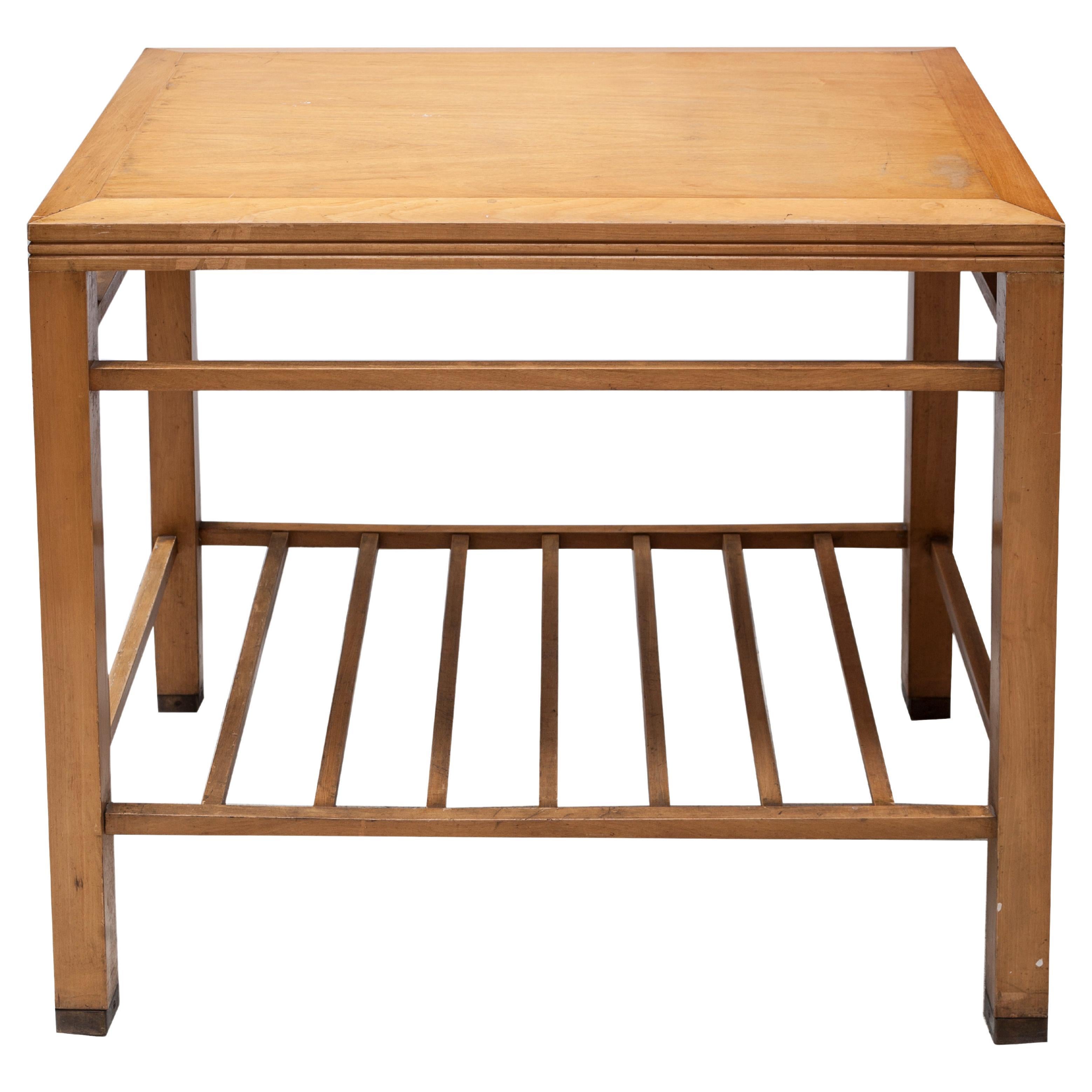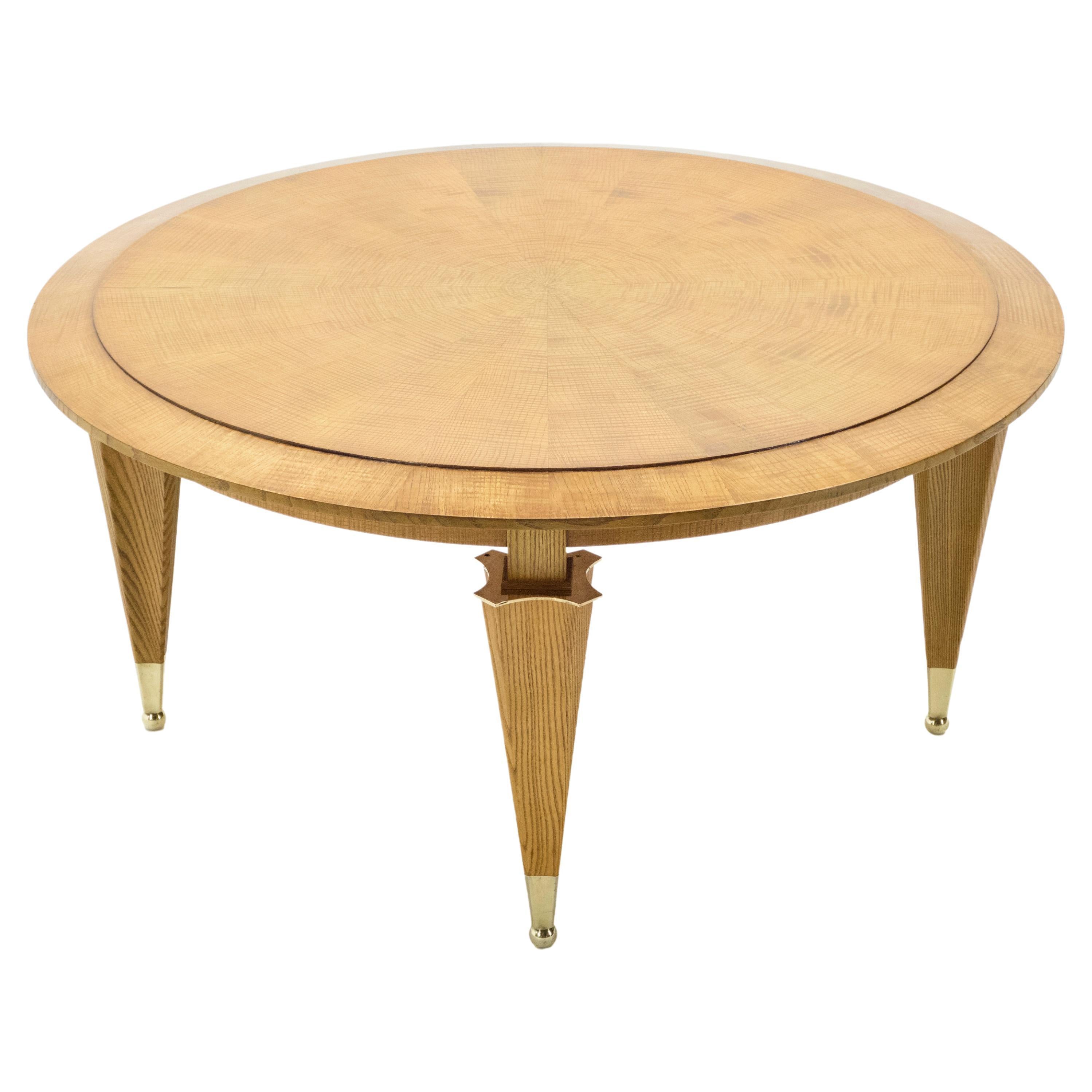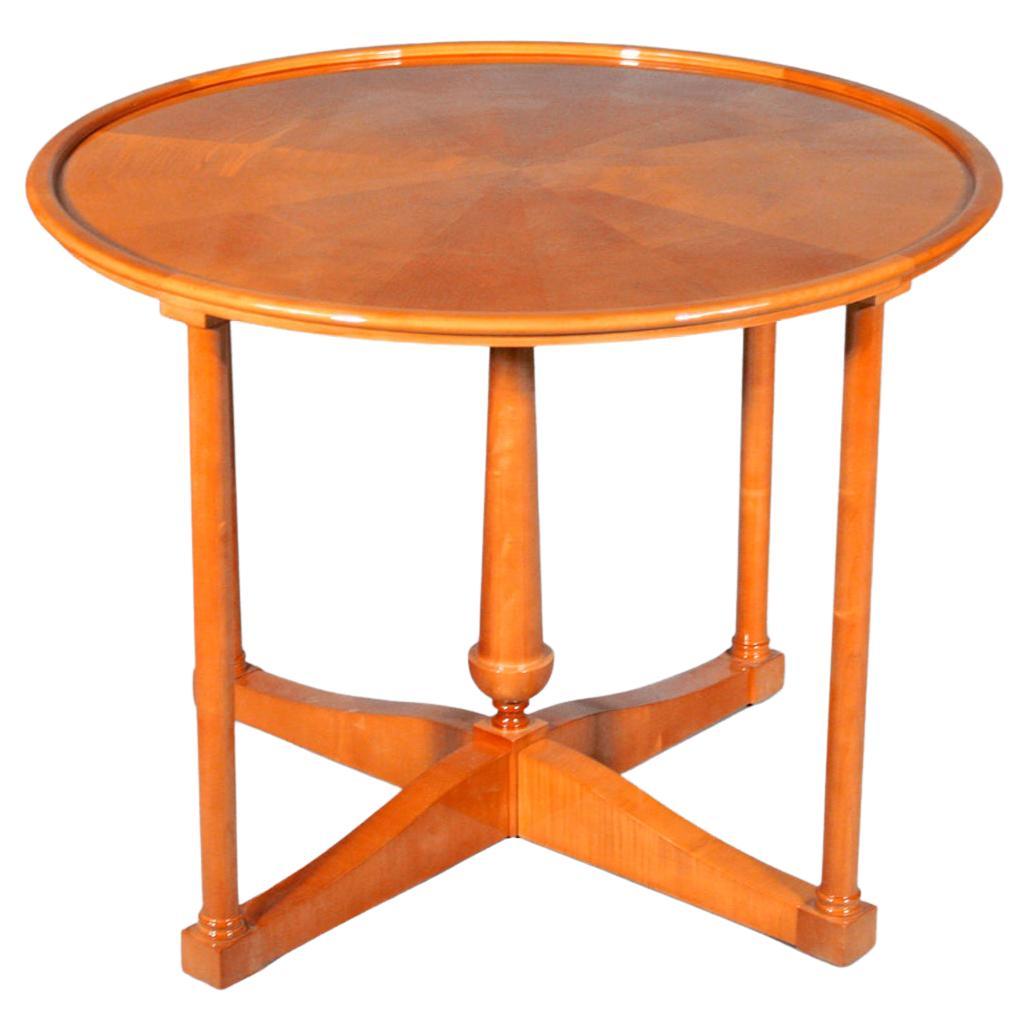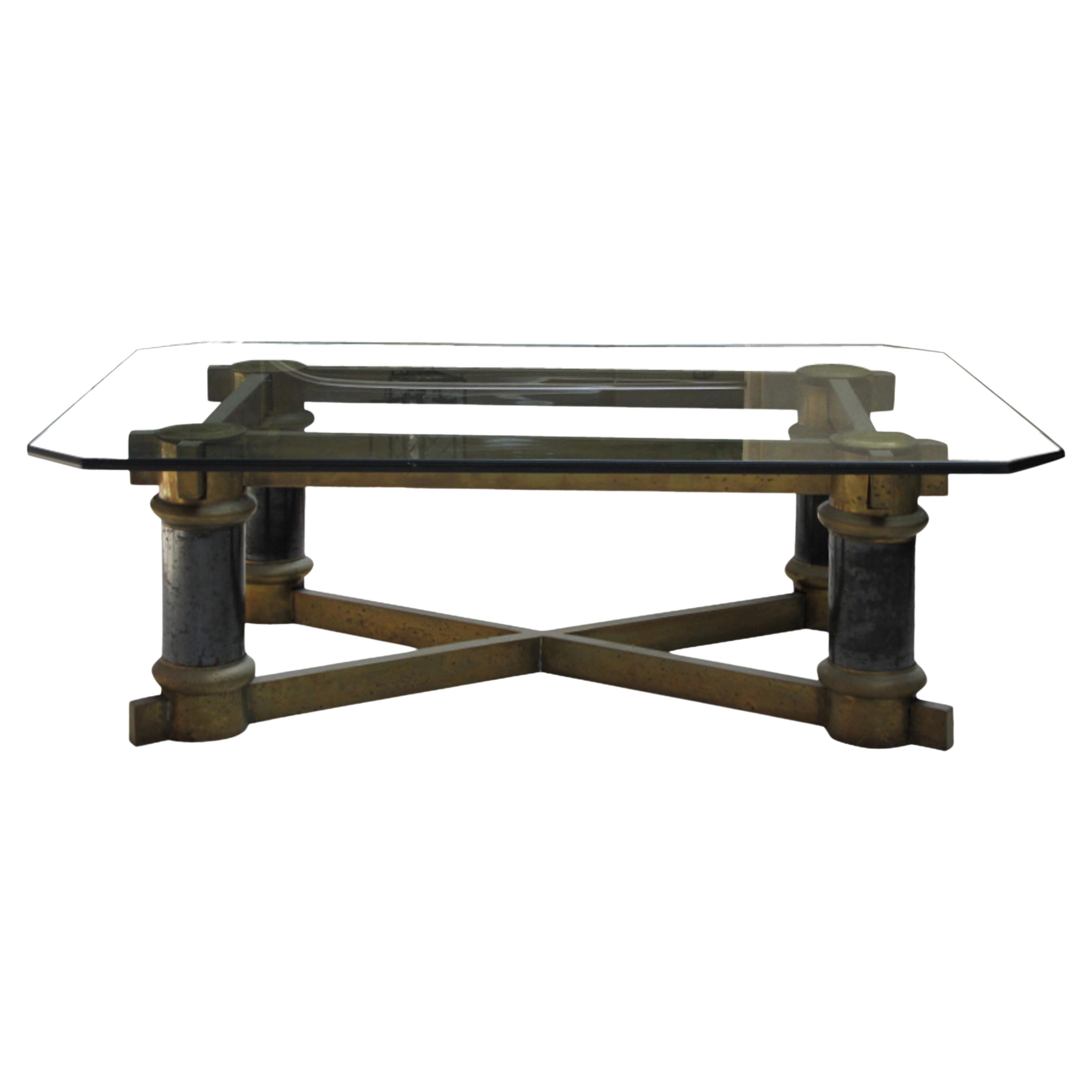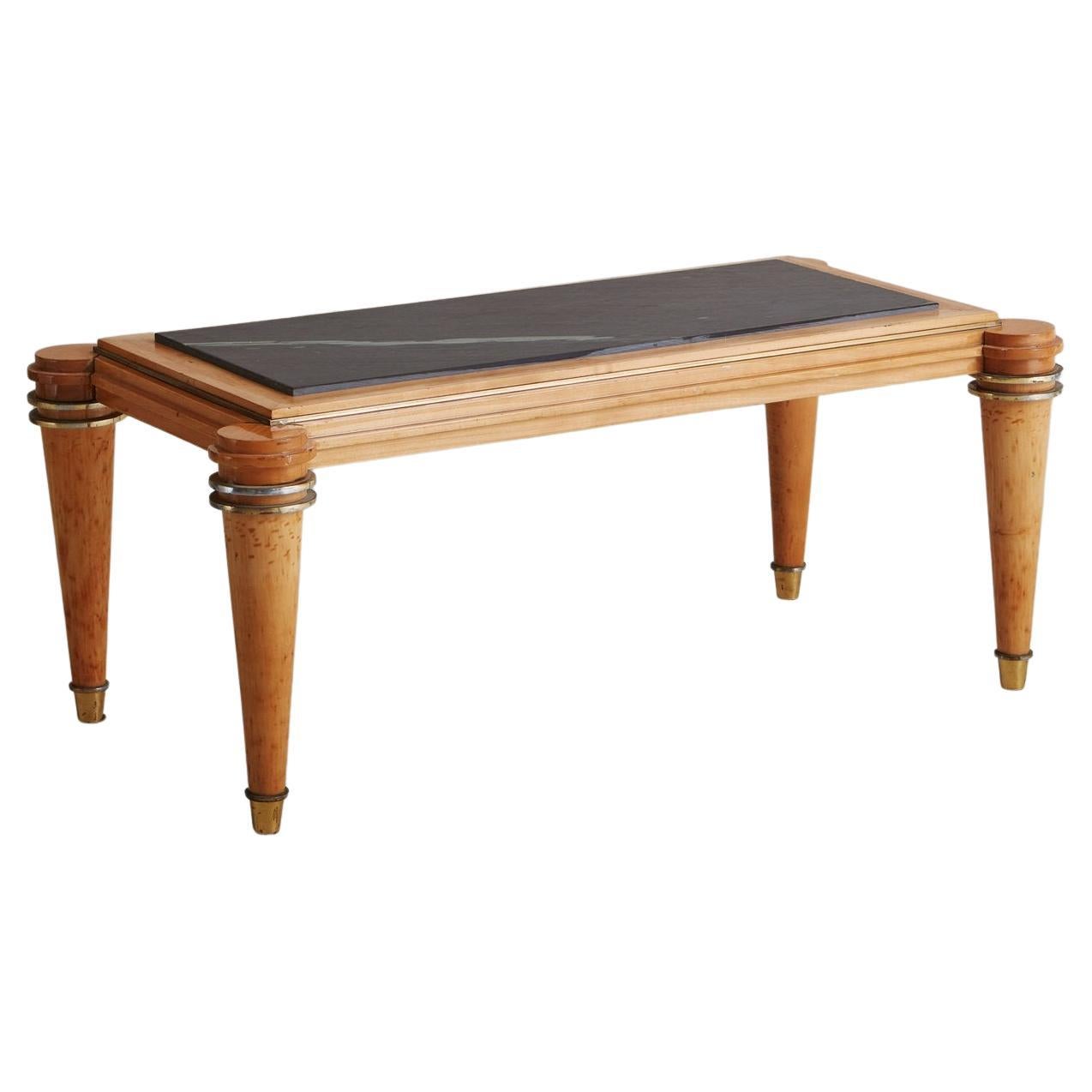Items Similar to Coffee Table Attributed to André Arbus, France, 1920, Materials: Leather, Wood
Video Loading
Want more images or videos?
Request additional images or videos from the seller
1 of 6
Coffee Table Attributed to André Arbus, France, 1920, Materials: Leather, Wood
About the Item
Coffe table Attributed to André Arbus
Material: Wood, leather and bronze
Style: Art Deco
France
We have specialized in the sale of Art Deco and Art Nouveau and Vintage styles since 1982.If you have any questions we are at your disposal.
Pushing the button that reads 'View All From Seller'. And you can see more objects to the style for sale.
Pushing the button that reads 'View All From Seller'. And you can see more objects to the style for sale.
Andre Arbus
Andre Arbus has a real sense of the aestheticism that he wants to give each of his furniture objects. It is purely material, yet also a spiritual search, achieved by adding charm and a humanistic touch to all of his executions. Arbus' fashion of conceiving furniture won over the public because the arguments for soul comforting pieces completed the actual physical comfort of the works. Rapidly, the Arbus models gave birth to a style that a number of young decorators contributed by their variations to expand this style. The mix of logic and delicacy put Arbus in the family of the classiques francais. ANDRE ARBUS was born in 1903, Toulouse, France. Arbus received an apprenticeship in cabinetry in Toulouse, in the atelier of his father and his grandfather. He then establishes himself in Paris in 1932. In 1933, Arbus obtained the Prix Blumenthal de la decoration and created some invaluable, robust furniture pieces. As if established by an architect, they are logically equipped with bases, facades, entablatures, sculptural ornaments and painting all of which heighten the eloquence of his vast selection of cabinetry. In Arbus' furniture design, he doesn't wish for a tactical return to the Decorative era of the XVIII century, but rather to inherit some of the virtues from this illustrious lineage. Arbus' furniture tempts, with his original thought and the means that become available to mankind in the 20th century, to perpetuate their work and their savoir-faire. Having thought about structure and furniture in architecture, Arbus must adapt his dominating ability to larger plans and manage these, all while continuing his efforts in cabinetry. He advances in the art of construction with the Maison de la famille francaise at the Exposition of 1937 and also at the Palais au Saolon des Artistes Decorateurs (1939). In 1942, he constructs many farmhouses in the prairies of Crau with the collaboration of Lucien Rollin. And on the Ilot du Planier, near Marseille, he becomes the designer of the most powerful lighthouse on the Mediterranean. Then Arbus is hired as the architect and decorator for a large ocean liner that is constructed in Newcastle and becomes the South American line. The extent of Arbus' creative register shows us in this circumstance that various elements of the decoration will be like furniture (illustrious glass from Venice, wrought-iron ramps, brackets, etc.), conceived by Arbus in view of the harmony that they present together. It is always on a spiritual basis that Andre Arbus, who was led by classical reasoning and architectural sense, undertakes his work up to the point where function becomes the glance at a refined and agreeable object. He died in 1969, in Paris.
Why are there so many antiques in Argentina?
In the 1880 – 1940 there was a grate wave of immigration encouraged by the periods of war that were taking place.
1st World War took place between 1914 and 1918
2nd World War took place between 1939 and 1945
The immigrants options were New York or Buenos Aires. Tickets were cheap and in Buenos Aires they were welcomed with open arms, as it was a country where everything was still to be done.
Argentina was the country of new opportunities, labour was needed and religious freedom was assured, in many cases the of the family travel first until they were settled and then the rest of the family members join them.
In the immigrant museum “Ellis Island Immigrant Building” in New York you can se the promotional posters of the boats that would take them to a new life.
Between the years 1895 and 1896, Argentina had the highest DGP (gross domestic product) per capita in the world according to the Maddison Historical Statistics index, this situation arose due to the large amount of food being exported to European countries, which were at war.
The Argentinean ships left the port of Buenos Aires with food, but they returned with furniture, clothes and construction elements, (it´s common to see this the old buildings of the historic neighbourhood of San Telmo, the beams with the inscription “Made in England)”, as well as many markets that were built in Buenos Aires, such us the San Telmo Market, whose structure was brought by ship and afterwards assembled in 900 Defensa Street.
With the great influence of European immigrants living in the country, the children of the upper classes travelled to study in France, resulting in the inauguration of “La Maison Argentinienne”, on 27th of June 1928, in the international city of Paris, which hosted many Argentinians that were studying in Frace.
It´s the fourth house to be built after France, Canada and Belgium, being the first Spanish-speaking one. Still in place today (17 Bd Jourdan, 75014, Paris, France). Many of the children of these wealthy families who attended international art exhibitions, museums and art courses abroad, took a keen interest in the European style. This is why Buenos Aires was at the time referred as “The Paris of South America”.
Between the years 1890 and 1920 more than a hundred Palaces were built on Alvear Avenue the most exclusive avenue in Buenos Aires. Today some of these palaces have been transformed into museums, hotels and embassies.
In the year 1936, the Kavanagh building was inaugurated, it was the tallest reinforced concrete building in South America.
During 1994 the American Society of Civil Engineers distinguished it as an “international engineering milestone”, and it´s now considered a World Heritage of Modern Architecture.
At the time was common to hire foreign architects such as Le Corbusier, who visited Buenos Aires/Argentina in 1929 and in 1948 he drew up the blueprints for a house built in La Plata City (which was declared a World Heritage Site).
In 1947, the Hungarian architect Marcelo Breuer designed “Parador Ariston” in the seaside city of Mar del Plata. After an Argentinean student at Harvard University convinced him to come to Argentina. He worked on an urban development project in the Casa Amarilla, area of La Boca.
The Ukrainian architect, Vladimiro Acosta, arrives in Argentina in 1928 and worked as an architect until que moved to Brazil.
Antonio Bonet, a Spanish architect who worked with Le Corbusier in Paris, arrives in Argentina in 1937, where he carried out several architectural works and in 1938 designs the well-known BFK chair.
Andres Kálnay, of Hungarian origin, made around 120 architectural masterpieces, among which the former Munich brewery stands out, he even made the furniture’s design.
The German architect, Walter Gropius, director of the Bauhaus, lived in Argentina, where he wrote articles for “Sur” magazine and founded in Buenos Aires, an architectural firm with Franz Möller, who was also an architect, where he built two houses.
At the same time several famous designers decided to immigrate to Argentina, among them we can find the well-known French designer, Jean-Michel Frank, who arrived in the country in 1940 and also worked for the Rockefeller family.
Special pieces were made, which were sold exclusively in the country, such as the well-known German company “WMF”, who sold their products by catalogue, which were chosen by the ladies of high society in the list of wedding gifts, as well as the pieces designed by Christofle.
The Swiss sculptor Alberto Giacometti, made special pieces for Argentinean mansions.
In 1904 the first Jansen branch outside Paris was established in Buenos Aires, as the Argentinean clientele demanded a large amount of furniture, from the end of the 19th century to the mid-20th century.
In 1970, the brand Rigolleau Argentina made pieces authorised by Lalique.
The brands Maple and Thompson also set up shop in the country.
The French plastic artist, Marcel Duchamp moved to Argentina in 1918-1919.
Glass signed Gallé, Charder, Leverre, Schneider, Muller and other French firms. They were bought in flower shops and were given to ladies with beautiful floral arrangements.
Some furniture manufacturers travelled to international fairs and bough the patterns to produce the furniture in Argentina, such as the furniture firm Englander and Bonta, who bought the patterns ins Italy.
It is worth mentioning that in Argentina we have the largest community of Italians outside of Italy, as it is estimated that 70 percent of the inhabitants have at least one Italian descendant, followed by Spanish immigrants.
The most Important furniture stores in Argentina:
Comte is founded in 1934 (under the direct management of Jean Michel Frank in 1940).
Nordiska (Swedish company established in 1934).
Churba in 1960, a company that brought foreign designers to present their furniture in the country:
Denmark: (Arne Jacobsen, Finn Juhl, Bender Madsen, Ejner Larsen, Poul Kjaerholm, Hans Wegner)
Sweden: (Hans Agne Jakobsson, Gustavsberg)
United States: (Herman Miller)
Finland: (Lisa Johansson, Folke Arstrom, Tapio Wirkkala, Alvar Aalto, Timo Sarpaneva)
Swedish Factory: (Orrefors)
Italy: (Littala, Vico Magistretti, Emma Gismondi, Gae Aulenti, Angelo Mangiarotti, Elio Martinelli, Gianna Celada, Angelo Mangiarotti, Mario Bellini, Carlo Scarpa)
Finland: (Olivia Toikka)
Plata Lappas (Lappas Silver): a goldsmith shop founded in 1887 in Argentina by Alcibiades Lappas of Greek origin.
In 2019, in Argentina took place “the Art Deco world congress”, in which we participated as hosts invited by Geo Darder, founder of the Copperbridge – Foundation, in which prominent people from all over the world attended to learn about Art Deco in Argentina.
Argentina currently has more than 100 Art Deco buildings and another 90 Art Nouveau buildings throughout the city of Buenos Aires.
Argentina is a country that has not been involved in many wars, which is why it has been a refuge for works of art and antiques from different periods of time, unlike European countries. That is way many collectors, museums and antique dealers from all over the world visit it, you should not miss the opportunity to visit this great country.
Laura Guevara Kjuder, architect.
- Attributed to:André Arbus (Designer)
- Dimensions:Height: 21.66 in (55 cm)Width: 20.08 in (51 cm)Depth: 43.31 in (110 cm)
- Style:Art Deco (Of the Period)
- Materials and Techniques:
- Place of Origin:
- Period:
- Date of Manufacture:1920
- Condition:Wear consistent with age and use.
- Seller Location:Ciudad Autónoma Buenos Aires, AR
- Reference Number:
About the Seller
5.0
Vetted Seller
These experienced sellers undergo a comprehensive evaluation by our team of in-house experts.
Established in 1982
1stDibs seller since 2022
21 sales on 1stDibs
Typical response time: <1 hour
- ShippingRetrieving quote...Ships From: Ciudad Autónoma Buenos Aires, Argentina
- Return PolicyThis item cannot be returned.
More From This SellerView All
- Table Art Deco, France, 1920, Materials, Wood and bronzeLocated in Ciudad Autónoma Buenos Aires, CTable Material: Wood and bronze Style: Art Deco France We have specialized in the sale of Art Deco and Art Nouveau and Vintage styles since 1982. If you have any questions we are at...Category
Vintage 1920s French Art Deco Coffee and Cocktail Tables
MaterialsBronze
- Coffee Table Art Deco, France, 1920, Materials: Glass and BronzeLocated in Ciudad Autónoma Buenos Aires, CCoffe table Materials: glass and bronze Style: Art Deco France We have specialized in the sale of Art Deco and Art Nouveau and Vintage styles since 1982. If you have any questions w...Category
Vintage 1920s French Art Deco Coffee and Cocktail Tables
MaterialsBronze
- Table Art Deco, France, 1920, Materials, Wood, Glass and Gold LeafLocated in Ciudad Autónoma Buenos Aires, CCoffe table Material: Wood, glass and gold leaf Style: Art Deco France We have specialized in the sale of Art Deco and Art Nouveau and Vintage styles since 1982. If you have any que...Category
Vintage 1920s French Art Deco Coffee and Cocktail Tables
MaterialsGold Leaf
- Art Deco Table, France, 1930, Material, WoodLocated in Ciudad Autónoma Buenos Aires, CTable Material: Wood Style: Art Deco France. We have specialized in the sale of Art Deco and Art Nouveau and Vintage styles since 1982. If you have any questions we are at your dis...Category
Vintage 1930s French Art Deco Coffee and Cocktail Tables
MaterialsWood
- Table Art Deco, France, 1930, Material : WoodLocated in Ciudad Autónoma Buenos Aires, CTable Material: Wood Style: Art Deco France. We have specialized in the sale of Art Deco and Art Nouveau and Vintage styles since 1982. If you have any questions we are at your dis...Category
Vintage 1930s French Art Deco Coffee and Cocktail Tables
MaterialsWood
- Table Art Deco, France, 1930, Materials, Wood and ChromeLocated in Ciudad Autónoma Buenos Aires, CTable Material: Wood and chrome Style: Art Deco France. We have specialized in the sale of Art Deco and Art Nouveau and Vintage styles since 1982. If you have any questions we are a...Category
Vintage 1930s French Art Deco Coffee and Cocktail Tables
MaterialsChrome
You May Also Like
- Andre Arbus Coffee TableBy André ArbusLocated in Philadelphia, PAFrench Forties Art Deco coffee table by Andre Arbus, circa 1938, in sculpted mahogany with mahogany veneers. 49" long x 19.5" deep x 18" high. Signed on un...Category
Vintage 1930s French Art Deco Coffee and Cocktail Tables
MaterialsMahogany
- André Arbus Ash Wood Neoclassical Coffee Table 1940sBy André ArbusLocated in Paris, IDFThis elegant André Arbus coffee table is sure to add an element of French neoclassicism chic to any room in your home. It was designed and pro...Category
Vintage 1940s French Neoclassical Coffee and Cocktail Tables
MaterialsBrass
- Mid-Century Sycamore Wood Coffee Table by André ArbusBy André ArbusLocated in Miami, FLSycamore wood round table/coffee table by French designer André Arbus.Category
20th Century French Art Deco Coffee and Cocktail Tables
MaterialsSycamore
- Wood + Stone Art Deco Coffee Table Attributed to Etienne Kohlmann, France 1940sBy Etienne KohlmannLocated in Chicago, ILA 1940s Art Deco coffee table attributed to Etienne Kohlmann. This table has a rectangular wood frame and stands on four round, tapered legs with circular brass detailing and brass f...Category
Vintage 1940s French Art Deco Coffee and Cocktail Tables
MaterialsStone
- Art Deco Mahogany Coffee Table by Andre ArbusBy André ArbusLocated in Montreal, QCArt Deco mahogany coffee table by Andre Arbus. Provenance: this buffet is part of a suite commissioned by Andre Arbus's personal physician .Category
Vintage 1940s French Art Deco Coffee and Cocktail Tables
MaterialsMahogany
- French Louis XVI Style Lemon Wood Table After André ArbusBy Maison Dominique, Jules Leleu, André Arbus, Andre Domin & Marcel Genevriere for Maison DominiqueLocated in Houston, TXFrench Louis XVI style Lemon wood table after André Arbus. Stylish French Louis XVI style lemon wood table, side table or gueridon with tapered legs....Category
Vintage 1940s French Louis XVI Tables
MaterialsWood
Recently Viewed
View AllMore Ways To Browse
Coffee Cased
Coffee Set Denmark
Danish Coffee Set
19th Century Coffee Can
Leather And Wood Cocktail Table
Vintage Leather Coffee Table
Designer Wood Glass Coffee Table
Wrought Iron Table And Chairs Used
Coffee Table In Wood And Iron
Used Wrought Iron Table And Chairs
Leather And Glass Coffee Tables
Modern Chair Coffee Table Set
Wood Belgian Coffee Table
Belgium Wood Coffee Tables
Coffee Shop Table
Brazilian Wood Coffee
Bases For Coffee Tables
Coffee Table Wood Glass French
